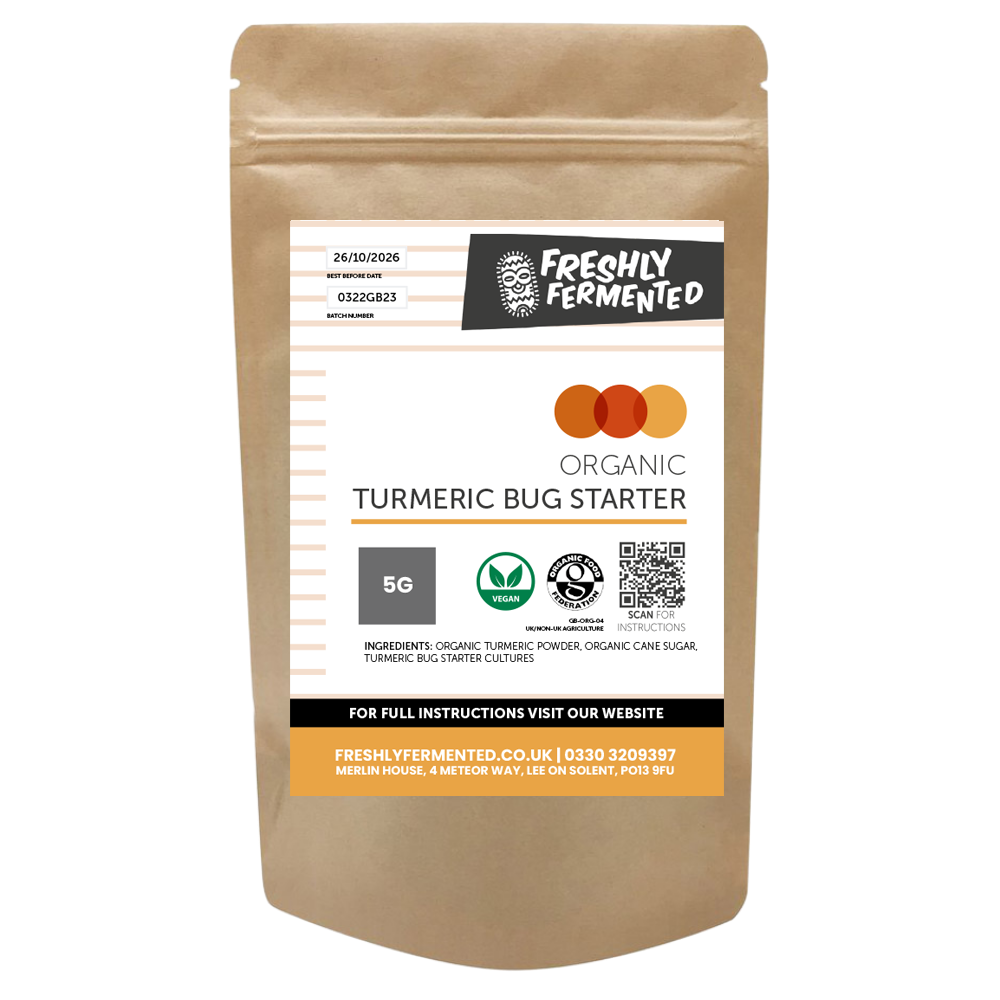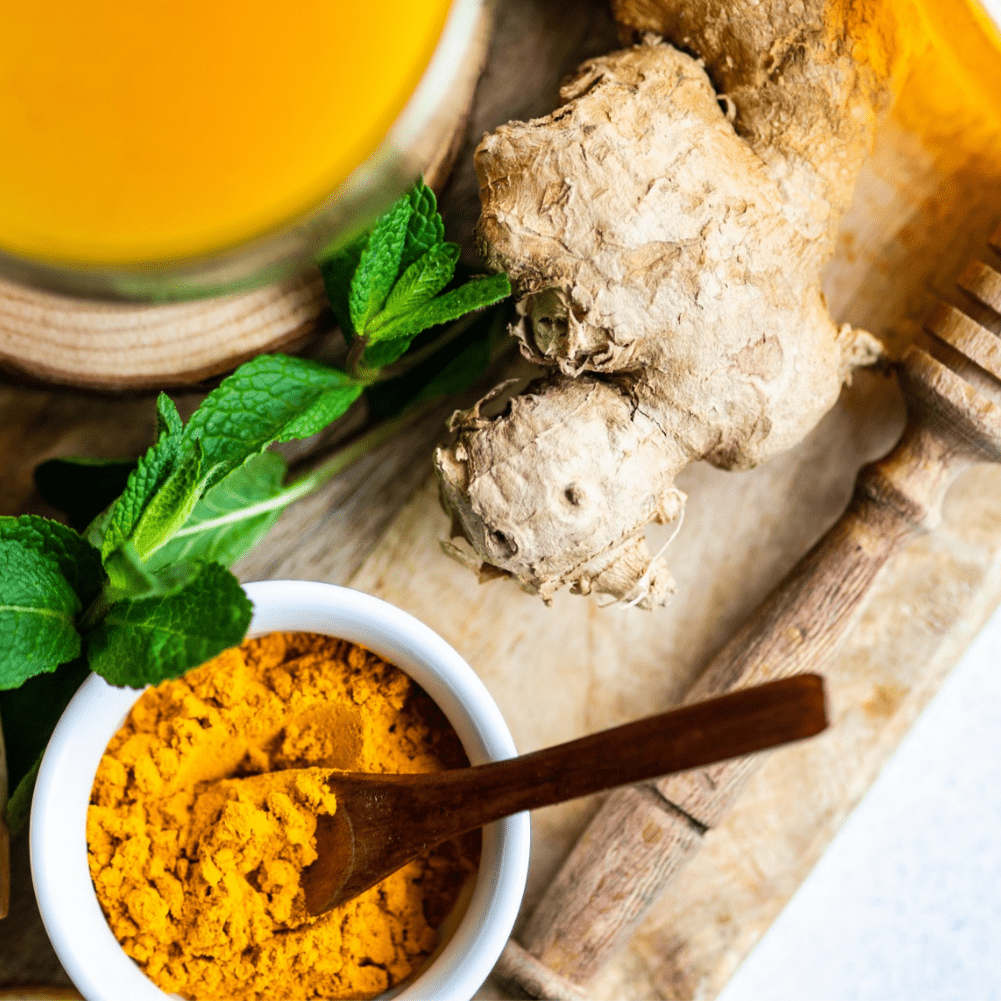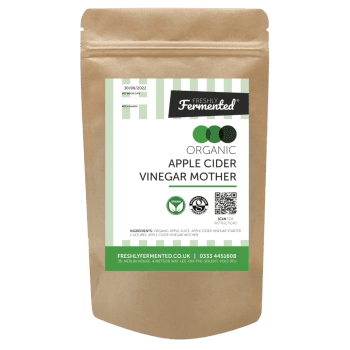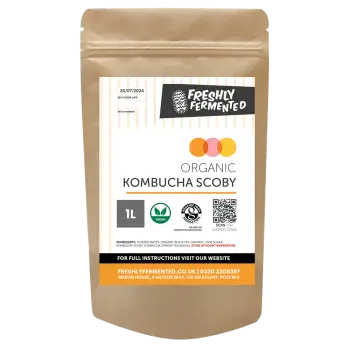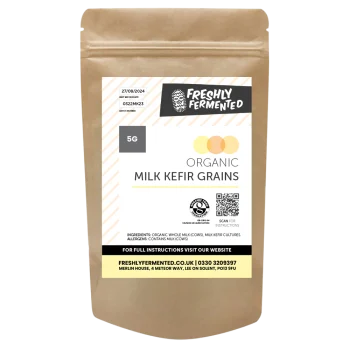- 🌿 ORGANIC CERTIFIED PRODUCTS
- 🔬 UKAS LAB TESTED CULTURES
- ⭐ 5 STAR HYGIENE RATED FOOD PREMISE
- ✅ LIFETIME CUSTOMER SUPPORT
- 🏷️ LOYALTY DISCOUNTS
- 🆓 FREE UK SHIPPING OVER £50
- 🚚 TRACKED UK SHIPPING FROM JUST £3
- 🌎 WORLDWIDE SHIPPING
- 📦 SUSTAINABLE ETHICAL PACKAGING
Our Organic Certified Turmeric Bug allows you to make a fermented carbonated drink similar to the way ginger beer is made. One of the main problems with Turmeric is it’s low bioavailability. Research has shown that fermenting turmeric greatly increases its bioavailability. By fermenting turmeric, we create beneficial compounds of curcumin easy absorbed into the bloodstream.
Turmeric has long been used as a natural anti-inflammatory compound across the world. Its main active ingredient is curcumin, which has been linked to many health benefits making it a popular choice for health conscious individuals.
Much like a ginger bug, a turmeric bug is a colony of Saccharomyces florentinus and Lactobacillus hilgardii. The result of a spontaneous fermentation that occurs when turmeric, sugar, and water are left to their own devices. The mixture captures wild yeasts and beneficial bacteria naturally from the surrounding environment. The fermented mixture can then be used to add a bacteria boost to homemade turmeric bug drink. Our Organic Certified Turmeric Bug may sound a little weird, but it tastes great!
| Weight | 5 g |
|---|---|
| Shelf Life | 1 year. |
| Storage | Keep at room temperature out of direct sunlight. |
| Allergens | None. |
Related products
UNLOCK YOUR 10% DISCOUNT
Join our fermentation community! Subscribe for expert tips, recipes, exclusive offers, and a 10% discount on your first purchase. Start your journey today!


